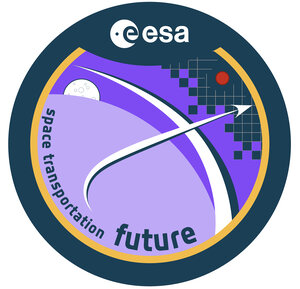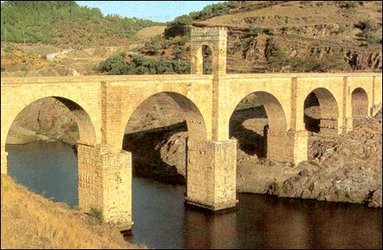Announcement of Opportunity 2012
The first Alcantara Announcement of Opportunity was issued by ESA on 15 March 2012, with 10 May 2012 as closing date.
In this page there is a short description of the studies which were proposed for this 1st Announcement of Opportunity.
Pilot studies:
| Reference No. | Title |
| 12-101 | Water reservoir mapping |
| 12-102 | Monitoring of aquatic plants proliferation |
| 12-103 | Definition of EO indicators for irrigation performance monitoring |
| 12-104 | Ecological modelling in the Nile Delta |
| 12-105 | Modelling river hydrodynamic and sediment transport processes in the Mara Wetlands |
| 12-106 | Integrated water resource management in Zambia |
For further information please contact:
Benjamin Koetz
Study Technical Officer
European Space Agency - ESRIN (EOP-SEP)
Benjamin.Koetz @ esa.int
Competence Survey:
| Reference No. | Title |
| 12-401 | Ionospheric ground based monitoring network in low-latitude regions: Africa |
| 12-402 | Ionospheric ground based monitoring network in low-latitude regions: South America |
| 12-403 | Ionospheric ground based monitoring network in low-latitude regions: South East Asia and Pacific |
For further information please contact:
Roberto Prieto Cerdeira
Study Technical Officer
European Space Agency - ESTEC (TEC-EEP)
Roberto.Prieto.Cerdeira @ esa.int
For the reference 12-401 please contact:
Andrés Gálvez
Study Technical Officer
European Space Agency - HQ (PPC-PF)
Andres.Galvez @ esa.int
12-101 - Water Reservoir mapping

The savannahs of the world are dotted with millions of small reservoirs (1 ha-100 ha). Dedicated methodologies for optical as well as radar imagery have been developed to map these reservoirs. The general idea of the study is to provide an overview of both the monitoring tools available and the operational hydrological use of information as derived from reservoir observations.
The primary objective of this study is to optimize satellite observation of small reservoirs in Africa's savannah zones and the hydrological information extracted from these observations. The study shall be demonstrated over Northern Ghana, which is representative for African savannahs.
The scientific challenge of the proposed study is how to exploit complementary information of optical and SAR Earth Observation data to map the multitude of reservoirs and their extent over time. The objective is to construct consistent time series out this multi-source datasets, which are relevant for hydrological processes.
12-102 - Monitoring of aquatic plants proliferation12-102 - Monitoring of aquatic plants proliferation

The proliferation of invasive plants and animal species in the Lake Victoria is of growing concern. In particular, the abnormal aquatic plants proliferation interferes with human activities such as fishing and boating or interferes with a balanced fish population, causes fish kills due to removal of too much oxygen from the water, produces quiet water areas that are ideal for mosquito breeding, impedes water flow in drainage ditches, irrigation canals and culverts, causing water to back up.
Water resource assessment comprises the continuous measurement and recording of water quality data. The purpose of the collection of information is to provide a basis for management and planning of water resources.
In this context an integrated approach based on multi-sensorial satellite remote sensed data (hyper/multispectral, radar), could provide an alternative means of water quality monitoring over a greater range of temporal and spatial scales in a timely and cost-effective manner.
12-103 - Definition of EO indicators for irrigation performance monitoring

Water resources in Morocco are faced with scarcity due to the phenomenon of climate change, degradation of water quality, over-exploitation and waste of these resources.
The only assets currently available are characterised by significant water losses in the transport networks of water for irrigation, industrial applications and drinking water.
Faced with growing needs, the research is needed to develop methodologies for accurate and up-to-date monitoring of water resources.
The growing need for integrated management of water resources requires knowledge and mastery of several physical parameters and socio-economic aspects. Remote sensing, with its ability to provide multi-temporal and multispectral images over large areas is an essential tool for mapping water resources, but will be needed to be efficiently integrated into irrigation models.
The project objective is to develop a methodology for monitoring and evaluation of actual water use for agriculture in the past and future years within the Doukkala region of Morocco.
The scientific challenge is to develop meaningful EO indicators coupled with predictive models of water needs to establish evapotranspiration maps on a monthly and/or annual basis and provide useful information for the management of water needs on a regional scale. Specifically the spatial and temporal variability of water consumption by crops will need to be taken into account based on multi-source EO data sets. Synergy with between VNIR and the thermal spectral range shall be investigated.
12-104 - Ecological modelling in the Nile Delta

Wetlands are among the Earth's most productive ecosystems. They have a role in flood management and groundwater recharge, they are important determinants of water quality in coastal areas and in rivers and lakes, and they affect the carbon dioxide balance through their vegetation and have micro-climatic effects.
Furthermore, many wetlands harbour a rich biodiversity in the form of, e.g., populations of birds, but also other animals and plants.
Growing populations, producing a wide range of waste products and pollution have increasingly put pressure on wetlands. This has led to the deterioration of natural wetland ecosystems, e.g., through eutrophication and introduction of exotic species.
Recent studies suggest that EO information and ground data will be needed to be combined for a comprehensive assessment of the wetlands ecological system and its functions.
The proposed research aims at better understanding wetlands characteristics and processes with a focus on the Nile Basin region (with special focus on the Edko Lake). The main objective is to develop a monitoring methodology integrating complementary techniques remote sensing applications and ecological modelling.
12-105 - Modelling River Hydrodynamic and Sediment Transport Processes in the Mara Wetlands

The trans-boundary Mara River basin covers an area of 13,750 km2, lying between Kenya and Tanzania for 395 km. It originates from the Mau escarpment flows through the homonymous wetland and after few kilometres it debouches into the Lake Victoria.
The increased floods and sediment deposition are believed to be the major factors that have contributed to the expansion of Mara wetland (Mati el al., 2005).
Wetlands plays important role in ecosystems e.g. they regulate river flow; filter pollutants, suspended sediment and fertilizers, and form spawning zones for some species of fish.
This study will investigate the effect of Mara river flow regime and variation of lake levels on spatial and temporal flooding dynamics within the wetland and its floodplain using 1D and 2D hydrodynamic models. One of the major challenges in the study area is the scarcity of rainfall and river flow data for modelling purposes. EO data together with in-situ observation will be integrated in the models to improve their spatial and temporal parameterization.
12-106 - Integrated Water Resource Management in Zambia

Zambia is a landlocked country in Southern Central Africa occupying an area of about 752,000 km2. It is endowed with significant natural resources of which copper (mining) forms the major backbone of its economy.
For strategic reasons, the country is seeking to diversify its economy into non-traditional areas such as agriculture, manufacturing and processing, and tourism.
In so doing, greater stress will undoubtedly be imparted upon the country's water resources which comprise five major rivers and the associated surface water and groundwater systems.
The primary objective of this study is to introduce and apply satellite remote sensing derived data as input parameter to support large-scale hydrogeological modelling of catchment areas, impacts of climate changes on rainfall and discharges, recharge of aquifers and delineation of sustainable use of groundwater, the interactions between surface and groundwater, the water quality of major basins and aquifers and risks of pollution from mining activities and other land uses, and the economics of water use.
12-401 - Ionospheric ground based monitoring network in low-latitude regions: Africa
In Africa, the capabilities for ionospheric monitoring coverage is rather limited compared to other regions. A reduced number of existing GNSS stations provide relevant ground-based data in Africa and neighbouring areas, for example those belonging to the International GNSS Service (IGS) [1]. Some research networks are available such as the SCINDA network from Air Force Research Laboratory and other network stations from UNAVCO, Boston College, etc.
The primary objective of this Competence Surveys is to improve the understanding, characterisation, monitoring and forecasting of the ionosphere in Equatorial Africa in order to benefit users from Global Navigation Satellite Services, Satellite Telecommunications, scientific research and other applications.
The study will in particular address the following goals:
- Identify continental, regional, national and local institutions and organisations in Africa that could host or support the installation of ionospheric ground stations and/or that could take advantage of the exploitation of the data.
- Interact with existing networks in order to implement the procedures to exchange data and products to be accessible to the networks but also to the various interested institutions in the region.
- Identify possible final users specific of the Equatorial Africa context, considering its geographical, demographic, social and political conditions.
12-402 - Ionospheric ground based monitoring network in low-latitude regions: South-America
In South-America, there is a stable ionospheric monitoring infrastructure including a number of permanent networks and projects continuously monitoring the state of the ionosphere, for instance, the SIRGAS-CON network with more than 200 permanent GNSS stations, many of them belonging to the International GNSS Service; the Low-Latitude Ionospheric Sensor Network (LISN) specifically focused on the ionosphere, covering 50+ stations in more than 10 countries in South-America; and some research studies funded by European Commission such as CIGALA addressing specific analysis on ionospheric scintillations.
The primary objective of this Competence Surveys is to improve the understanding, characterisation, monitoring and forecasting of the ionosphere in the South-American region in order to benefit users from Global Navigation Satellite Services, Satellite Telecommunications, scientific research and other applications.
12-403 - Ionospheric ground based monitoring network in low-latitude regions: Southeast Asia & Pacific
In Southeast Asia and Pacific region, there are several scientific publications about ionosphere research, particularly in India, but not specific GNSS monitoring networks apart from the stations from IGS and the Southeast Asia Low-latitude IOnospheric Network (SEALION).
The primary objective of each of the individual Competence Surveys is to improve the understanding, characterisation, monitoring and forecasting of the ionosphere in the Southeast Asia & Pacific region in order to benefit users from Global Navigation Satellite Services, Satellite Telecommunications, scientific research and other applications.















 Germany
Germany
 Austria
Austria
 Belgium
Belgium
 Denmark
Denmark
 Spain
Spain
 Estonia
Estonia
 Finland
Finland
 France
France
 Greece
Greece
 Hungary
Hungary
 Ireland
Ireland
 Italy
Italy
 Luxembourg
Luxembourg
 Norway
Norway
 The Netherlands
The Netherlands
 Poland
Poland
 Portugal
Portugal
 Czechia
Czechia
 Romania
Romania
 United Kingdom
United Kingdom
 Slovenia
Slovenia
 Sweden
Sweden
 Switzerland
Switzerland






























